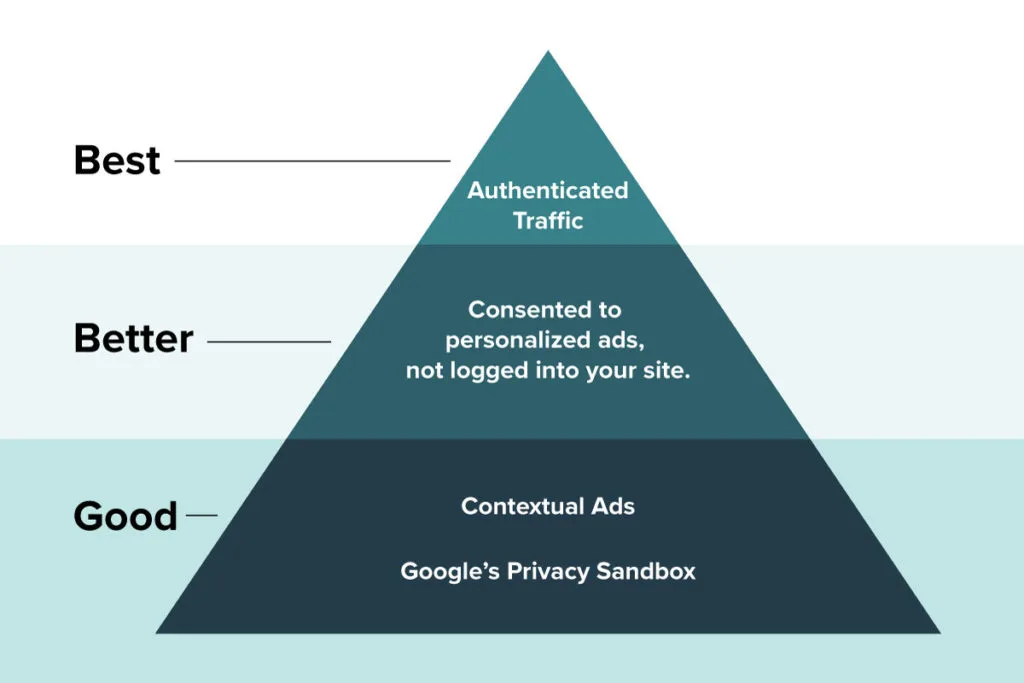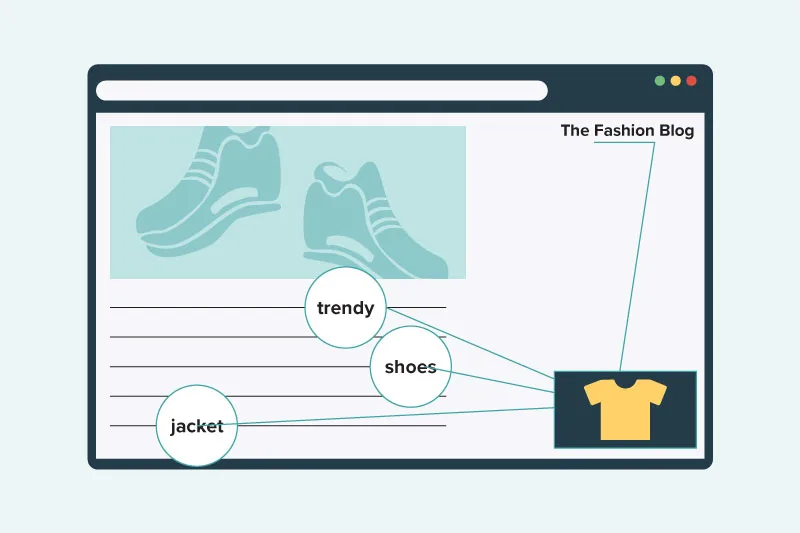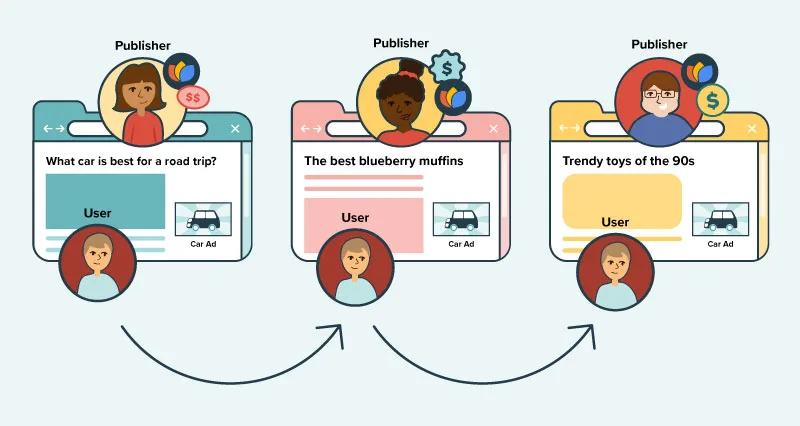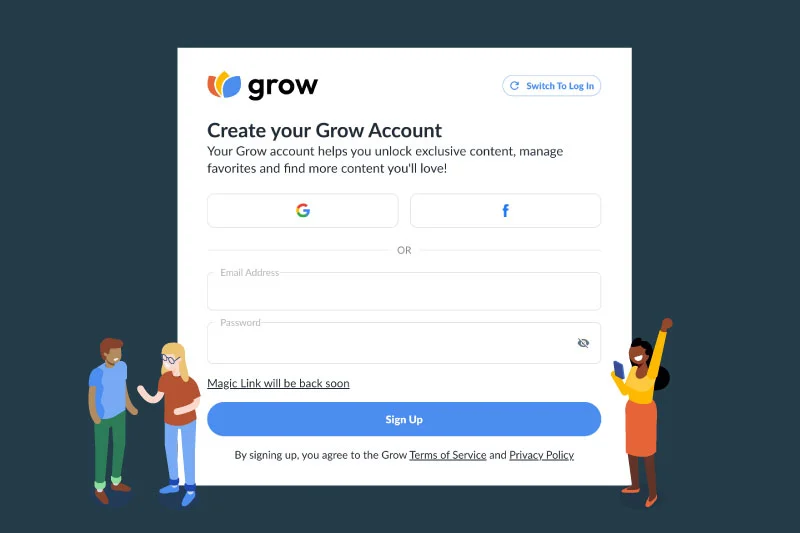How Publishers Can Profit in a Cookie-less World: Mediavine’s Comprehensive First-Party Data Solution


Yes, it’s finally happening.
After nearly four years of delays, the end of third-party cookies is nigh. Deprecation will begin in early 2024 and cookies will be fully phased out by the end of the year, according to Google.
The end of third-party cookies will forever change the ad landscape — but will it mean the end of content creators?
Not if you’re a Mediavine publisher.
Because Mediavine built the only first-party data solution for publishers and advertisers alike, we predict these changes will mean only good things for those who join us on this journey.
What is that solution? And what exactly is the problem that it’s solving for?
Grab your coffee and take a seat while we break down the end of cookies, the coming shift in the ecosystem and Mediavine’s multifaceted plan for the future.
We’ve gone over this in detail and recommend checking out some of our previous blog posts for more information. But the long and short of it is that the end of cookies means the end of advertisers’ ability to serve ads relevant to readers — and measure how well those ads worked.
Example: If you’re selling diapers, you’ll no longer be able to target parents of newborns, nor find out from local stores if you sold more diapers to readers that saw your campaigns.
Browser-based (third-party) cookies made this user data, and performance tracking of ads targeted toward those readers, readily available. Come 2024, this fundamental tool of the advertising industry will be fully deprecated. Then what?
Without an alternative to this system, expect advertisers to be willing to pay less per ad unit since they’re not able to hyper-target audiences or accurately measure investment.
Put another way, brands will still want to reach the same people, but without cookies, they’ll have to buy more inventory across the whole internet in order to achieve the same results, meaning the amount you’ll see from the units on any individual site will decline sharply.
How much less are we talking about? Google estimates up to a 60% decline in ad performance.
Deep breaths. That figure implies that there are no solutions or alternatives to third-party cookies. But as a Mediavine publisher, you’ve got plenty.
We need to recognize that cookies are going away for a reason — the widespread shift in reader expectations toward greater privacy regulation is no accident.
Things are changing and we can’t simply replicate what we had in the past. Not every reader is willing to be served fully personalized ads.
This is why we’re being realistic and going with what we think of as a Good, Better, Best methodology for addressing the variety of readers on your website.
Think of a pyramid with Good at the bottom, making up the bulk of web traffic. It’s essential, but you really want the Better and Best sections at the top of the pyramid.
In summary, here are the three levels of the pyramid:

Mediavine will be able to serve high-paying ads to all three categories of readers with the goal of maximizing the Better and Best categories to net you even more revenue on balance.
Let’s break down the three groups in more detail to get a better understanding of how they will formulate our comprehensive strategy to surpass the third-party cookie era.
A majority of your traffic isn’t going to consent to personalized ads nor log in. I wish it wasn’t true, but it is, and a majority of anything is impossible to ignore.
So what will we do to help publishers monetize the majority of your readers once the world can no longer rely on third-party cookies?
First, it will depend on the browser. If they’re running Chrome, we’re going to take advantage of the Privacy Sandbox.
As one of only six GCPP Premier partners, we’ve been in regular contact with both the Google Chrome and Ad Manager teams responsible for the Privacy Sandbox.
We’ve been early testers of its features over the years, including the Protected Audience API and Topics API — the two features that look like third-party cookie replacements for personalized ads.
Between these two APIs and the rest of the Privacy Sandbox, we hope to recover a lot of the lost revenue for these (many) good readers.
But that still leaves Safari, Firefox and other browsers without third-party cookies — as well as Chrome users that have opted out of Privacy Sandbox features.
In those cases, we still have a variety of ways to help you monetize those readers through our incredible partnerships and sales efforts.
We’ll be using more old school ad targeting methods like contextual, where ads are about the content or site you’re reading rather than the reader. This style of ad targeting won’t earn publishers as much as cookie-based ads do today, but it’s a whole lot better than nothing, especially as this technology improves.

Speaking of better …
Every time Google or anyone else talks about the end of third-party cookies, they talk about first-party data as the solution — and for good reason.
Mediavine is perfectly positioned to assist publishers in harnessing the power of first-party data. In fact, our expertise in this area was recently acknowledged at Google’s Publisher Data Summit, where we were honored with the First-Party Data Activation award for our innovative first-party data solutions.
But, without third-party cookies, there’s no third-party data.
Ultimately there’s only one person that can replace the data, and that’s the person who runs the website. The publisher. You.
That’s why Mediavine built Grow, a tool to allow all publishers to band together and generate enough volume of first-party data to have an impact on advertiser spend.
Individually, none of us has the scale to offer what advertisers need, but combined across our 10,000+ publisher sites, we sure do.
That’s where Grow comes in. If a reader consents to personalized ads, even if they don’t log in, we’re able to start learning about the reader as they browse sites running Grow.

For example, if the reader browses a Grow site about cars, we may learn that they are looking to purchase a car. Then, when they browse your food blog, which is also running Grow, we can serve a car ad to that reader even when they’re browsing a food blog.
You can start to see where the scale of Grow is vital to its success and why we want as many websites running this as we possibly can.
These ads — not the Best (still to come) but Better than anonymous because they’ve given us some degree of consent — provide advertisers many of the targeting capabilities they need and should be nearly as strong performance-wise as what third-party cookies/data provide.
Now we’re getting somewhere, but we’re not done yet. The ultimate goal is not just replacing third-party data, but improving on it with authenticated traffic — the Best solution of all.
This isn’t just where Grow shines; it’s where Mediavine publishers can dominate. No one else is offering a solution like this at this scale.
Authenticated traffic is when a reader logs in to your site and consents to personalized ads.
Grow is able to do this through a single sign-on account in which readers agree to plain English terms of service that let them know how we plan to use their data.
Then, all you need to do as a publisher is have the reader log in.
You don’t need to worry about account creation, and more importantly, the data and consent side of the equation. It becomes one simple click.
Already, we have millions of combined users and Grow provides a whole host of features that make logging in as easy as that one click.

What do advertisers get out of this?
A lot. With first-party data in play, we can use identifiers such as Unified ID 2.0 and LiveRamp ATS to give them even more than they got with third-party cookies.
This allows advertisers to bring their own data to the equation, and in a privacy-safe manner. It’s better data for them and better for the reader.
And the best part of all? It’s also better for you. Way better.
Even while third-party cookies are still around, we can see that this authenticated traffic already earns publishers nearly 115% MORE on Safari.
We expect that figure to increase as well. Remember, this is still new and many advertisers have yet to invest serious resources into these kinds of campaigns.
We believe this is the future of digital advertising and that Mediavine publishers are poised to remain the top earning publishers on the internet because of it.
A lot depends on the type of site you run as well as the decisions you make as a publisher. Do you plan to run Grow and optimize for those Better and Best ads? If so, we believe you’ll find yourself walking away with a nice increase in revenue.
While not technically required, unless you already have 5-10% of your traffic logged in and properly consenting, then you’re certainly going to want Grow.
If you’re thinking your 20,000 email subscribers have you covered, let’s chat.
Part of what makes Grow work so well is the collective power it brings to publishers. Your 20,000 subscribers may seem relatively modest, but through Grow, they are combined with the subscribers of potentially thousands of other websites to create a massive pool of authenticated users that rivals any publisher online and draws the attention of premium advertisements.
In short, this isn’t something that can be done easily on your own. Even some of the largest publications on the internet have trouble doing this alone, and most independent publishers don’t have anywhere near the scale.
If you want to continue to work with Mediavine and completely ignore the other ad types, you certainly can. You will take advantage of our Privacy Sandbox integrations, contextual advertising and partnerships, and you certainly will still make money.
But you’ll likely be leaving some money on the table compared to the third-party cookie world of today — and certainly more than if you run and optimize for Grow immediately.
How do you optimize for Grow? 1,970 words is enough for one article. I’m tired. But stay tuned because that post is coming soon!
Stay up to date with the latest from Mediavine
In today’s digital landscape, advertisers are becoming increasingly selective about where they place their ads. With the growing importance of brand safety, audience engagement and ROI, the quality of a …
 Eric Hochberger
Eric Hochberger
Since the advent of Trellis, Mediavine’s goal was to provide a WordPress framework to meet the needs and pain points of independent publishers. We’ve had the pleasure of working with …
 Amanda Martin
Amanda Martin
To enhance both the visual appeal and functionality of our publishers’ websites, Mediavine is making essential updates to optimize ad density while meeting industry standards and maintaining revenue performance. We’re …